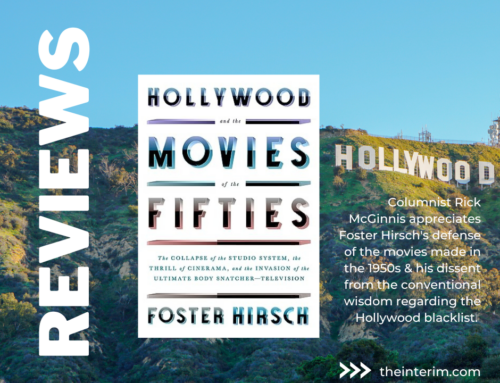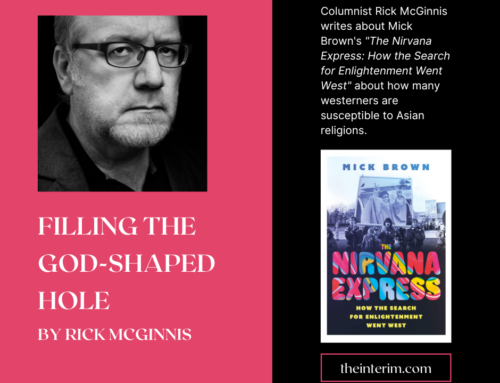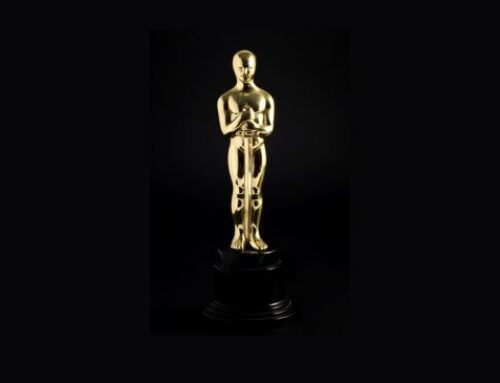 My career choice hasn’t been a gateway to riches, but it has a few perks, one of which is the appearance of dozens of DVD screeners in my mailbox in the weeks before Christmas. “Academy screeners” is their full name – DVDs of movies made for members of the Motion Picture Academy of America so that members can nominate Oscar winners without having to drag themselves to a theatre.
My career choice hasn’t been a gateway to riches, but it has a few perks, one of which is the appearance of dozens of DVD screeners in my mailbox in the weeks before Christmas. “Academy screeners” is their full name – DVDs of movies made for members of the Motion Picture Academy of America so that members can nominate Oscar winners without having to drag themselves to a theatre.
I don’t get every movie potentially in the running, but I do get a good look at most of the major players and some of the curious long-shots in the comfort of my living room. The studios watermark every one of them with a digital code, so I’m supposed to guard them with my life – if a film marked with my number shows up on some file-sharing network, I’ll be at the tender mercies of the industry’s lawyers. I’m not a member of the MPAA, but local film critics’ societies are understandably eager beneficiaries of the industry’s promotional largesse. A few long evenings spent watching screeners is hardly a rigorous or scientific way to formulate grand, sweeping statements about the state of movies, but it’ll do in a pinch.
The first fact I could glean from my stack of screeners this year was a dearth of family films; apart from Pixar’s Up – like any Pixar film, likely to vanquish all competition in the animated feature category – there was nothing I’d want to show my children. Harry Potter and the Half-Blood Prince, the penultimate movie adaptation of J.K. Rowling’s books, sees poor Harry firmly mired in the awkward longeurs of his teen years, with Harry and his friends more unnerved by the presence of the opposite sex than any wraithlike cabal of death-eaters.
The film is shot through with a gloomy, stygian tone that feels more a product of its young hero’s adolescent anxieties than any impending battle with dark forces; taken together with the equally massive Twilight series of books and movies, you have to wonder how any teenager alive today will emerge into their twenties able to distinguish between sex and death. At best, we’re producing a generation of romantic poets in the German tradition; at worst, a further generation of therapists will be busy for decades to come.
Wes Anderson and the pseudonymous Spike Jonze are two young directors with sterling critical reputations who made movies based on well-loved children’s books. Anderson chose Roald Dahl’s Fantastic Mr. Fox, whose plot he only retained only cursorily, while transforming the characters into the conflicted neurotics and belligerent eccentrics that he’s made his trademark. Jonze took Maurice Sendak’s Where The Wild Things Are and transformed the slight, magical tale so beloved by pre-schoolers into a film that manages to be both unsettling and crushingly dull, after it’s departed from a real-world prologue that depressingly sets the scene in the scorched earth of a broken home.
There are a few bright spots in my little pile of screeners – Jason Reitman’s Up In The Air is an eminently watchable story about a charming man (George Clooney, who also provides the voice for the titular character in Mr. Fox) who realizes that he’s blighted his soul by cultivating a life isolated from friends, family and love. Katherine Bigelow’s Hurt Locker is probably the best film made about the Iraq War, while a Canadian documentary about a woebegone heavy metal band is probably my favorite documentary of the year.
Anvil: The Story of Anvil has a wonderfully redundant title suitable to its subject, but has been apparently locked out of Oscar competition despite critical accolades. It’s the story of a Toronto metal band that never quite made it, thanks to a combination of bad luck, poor choices, lousy management and the undeniable aura of the second-rate. In my darker moments, I imagine that it might just as well have been called Anvil: The Story of Canada.
Finally there’s District 9, the South African sci-fi movie that imagines a close encounter turned ugly. In Neill Blomkamp’s film, an alien mother ship strands itself in the air above Johannesburg, while its bug-like crew is quickly relocated to live in squalor in a slum outside the city. You might have guessed that it’s an allegory about apartheid, albeit one that eventually runs out of metaphorical steam, but the most vivid scene in the whole picture happens early on, when the protagonist leads a mass eviction of the slum’s inhabitants and discovers an alien nursery in one of the huts.
He merrily sets about what he forthrightly calls an abortion of its inhabitants, disconnecting tubes and calling in a flamethrower; it’s the most discrete scene in the increasingly bloody, effects-laden film, but it’s easily the most horrifying, made all the more so by the protagonist’s callous enthusiasm for his job. (He’ll have an ironic comeuppance later.)
I’ve written before that while the movie industry seems to strive mightily to win the race to the moral bottom, it’s a sign of faint hope that they still haven’t found a way to make abortion – even of buglike alien eggs – anything less than an abomination. I count this as a small but cherished annual victory, and as long as it lasts, I’ll count my little Christmas bounty of screeners as a welcome gift.




